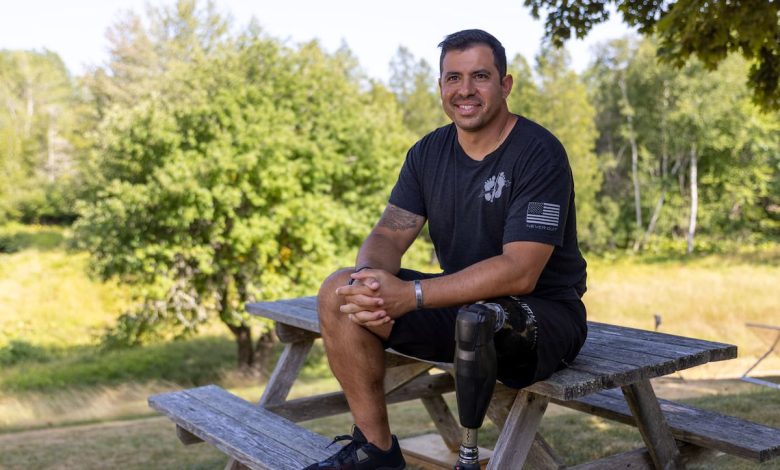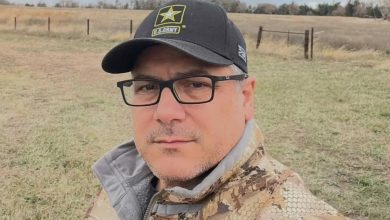Fisher House dedicates 100th facility while focusing on future goals

For more than 30 years, Fisher House Foundation has provided lodging for wounded or sick service members and veterans and their families at Department of Defense or Veterans Affairs health care facilities.
The organization can currently host 1,300 families per day, and has served more than 500,000 families since its inception. This week, the organization marked a big milestone, as it dedicated the 100th Fisher House, located at the Capt. James A. Lovell Federal Health Care Center in North Chicago, Illinois.
But there will be no resting on laurels, says Fisher House Foundation Chairman Ken Fisher. In fact, the lessons learned from previous Fisher Houses and how they have been used have helped shape the future of the organization.
“It was our intention to build a Fisher House wherever one was needed,” says Fisher. “The need for Fisher House started to evolve in ways that we didn’t see before.”
That evolution has been driven by advancements in health care. As medics in the field and military doctors and nurses have learned how to treat injuries that would have previously been fatal, the number of troops killed in action has declined significantly. But survivors are often coming home with injuries such as multiple amputations that have created new challenges for both their ongoing health care and what Fisher House can provide.
But opportunities have been born from those challenges, as the organization has learned from Fisher House guests and how they have adapted in unexpected ways.
Fisher pointed out that in many cases, people will stay at one Fisher House initially, but then use other Fisher Houses as they transition from DOD health care to the VA. There was one other unexpected development as well.
“We also noticed that what was happening inside the houses was something that nobody ever thought was possible, and that was the support system that was forming in each and every house that we built,” says Fisher. “And why is that? Because when you look at it, you’re putting a group of people in one place under extreme stress. That can manifest itself in different ways. But as we learned and we noticed, the families had commonality of experience.
“Not many people understood what military and veteran families are going through, and so when you put these people together, what we found was they supported each other, and this was consistent in every Fisher House that we built.”
That support system is critical, because caring for wounded service members isn’t just about their physical needs. It also means taking mental burdens away, to help both those receiving treatment and their families focus on recovery.
“So there was the healing aspect, which made families better caregivers,” says Fisher. “It also made the patients better patients because they didn’t have to worry about not only the financial burden, but where their loved ones were staying and how they were getting from point A to point B.”
The mental and emotional support are critical to wounded service members, veterans and their families, but their physical needs must be met as well. The designing, planning and construction phases focus on accommodations such as wheelchair-accessible bathrooms, balconies that can be accessed by guests with limited mobility and elevators, as well as services such as on-site laundry and playrooms for children. As the needs of those who use Fisher House have changed, the organization has incorporated those needs into its planning and construction, providing for an easier user experience — which also helps with the mental and emotional aspects of a stay at a Fisher House by removing obstacles for those with limited mobility or other health issues.
“We didn’t want anyone not to be able to use a Fisher House because it wasn’t accessible given their current situation,” says Fisher. “I’d rather have a house that had too much than not enough.”
Learning from how Fisher Houses are being used has helped the organization adapt how it supports those in need, and not just through building physical locations. The organization created a Hero Miles program, where people can donate unused frequent flyer miles to help defray travel costs; to date, more than 70,000 airline tickets have been donated through the program. The organization also has a hotel program, where it can provide lodging in local hotels if there isn’t room at a Fisher House, through donations of credit card or hotel loyalty program points. In addition, Fisher House has multiple scholarship programs, which have awarded more than $27 million to 15,000 students, and is involved in sponsoring events such as the family programs for the Warrior Games and the Invictus Games.
“The Fisher House program has tried to keep up with the needs of our families,” Fisher says. “Servicemen, women and veterans, just by paying attention to what they’re doing and what their needs were, but also by staying lean and agile and only evolving in family-oriented ways.”
Lean and agile are key concerns for Fisher House, as its core mission is focusing on providing services to those who need them. Fisher points out that the organization spends 93 cents of every dollar it raises on providing services, and has received 20 consecutive four-star ratings from Charity Navigator for its performance and stewardship of how donations are spent.
“There’s a business mindset to running Fisher House, that we view ourselves as a public company and our donors are our shareholders,” says Fisher. “And so the dividends to our donors are the metrics, are the 600,000 families that have benefited from this program, the over $600 million in savings of lodging and travel, and plus the other things that we’ve gotten involved in.
“So what’s kept Fisher House on the straight and narrow is again having that public mindset, that mindset that we’re answering to our donors and to the people that we seek to serve. And if we’re not reaching those people, then we’re not doing our job, we’re not fulfilling our mission.”
Editor’s note: This article has been updated.
Read the full article here









